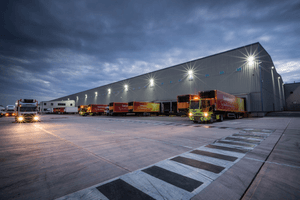This article is from the Australian Property Journal archive
FOLLOWING several years of subdued activity, the retail sector bounced back strongly to finish 2024 with $8.4 billion worth of deals.
According to JLL’s latest data, the 2024 tally across 116 transactions was the fourth largest year on record since 2010, and it was 14% higher than the three-year average and 17% above the 15-year average.
The market started off slowly with only 11% of transactions completed in the first quarter, indicating a cautious approach from investors, before picking up place in the third and fourth quarters which saw nearly 75% of the volumes traded for the year, above the prior three-year average of 64%.
JLL senior director of retail investments Nick Willis said this was evidence of a resurgence in optimism, driven by the renewed interest of local REITs and wholesale funds.
“The sector’s improving global narrative underwritten by strong fundamentals and positive tailwinds drew in maiden capital and outlined a growing increase in offshore engagement.”
“We saw a notable rise in interest from a diverse range of investors. This influx of new market participants intensified competition for quality assets, resulting in a 30% increase in bidder participation across our campaigns. We expect this to continue into 2025, namely offshore funds in this weakened Australian Dollar environment, particularly from US domiciled funds,” he added.
The most active players were syndicators, representing 40% of all transactions, led by Fawkner acquired which Figtree Grove for $212 million and Willows Shopping Centre for $192 million.
Other major transactions Chris Lock’s IP Generation snapping up Stockland Glendale in the largest retail transaction of the year and the largest in the sub-regional NSW market in more than 18 years, whilst Scentre Group expanded into funds management with the acquisition of Dexus’ stake in Adelaide’s Westfield Tea Tree Plaza, for $308 million in a joint venture with Barrenjoey.
“We will continue to see this trend in 2025, however now with more competition from the institutional market,” Willis predicts.
Meanwhile the market continues to face a shortage of core assets on the market, which is expected to put pressure on the market and result in yield compression in 2025.
JLL head of retail investments Sam Hatcher said the anticipated rental growth story came to fruition last year with Large Format Retail and Sub-Regional rents experiencing 4.8% and 3.6% respectively.
The LFR sector also witnessed the biggest large format retail transaction of the year as exclusively reported by Australian Property Journal, with Barings paying $74 million to buy Joondalup Square from Arise Developments.
“As a result, owners of existing centres who are experiencing this growth within their portfolios continue to be the most dominant buyers in the market. Whilst newer entrant capital is hovering across the sector and awaiting data sets, that existing owners are experiencing in real time, before deploying. In a supply starved market, we expect rental growth will drive capital engagement leading to more demand and as a result will be the ultimate driver of yield compression in 2025.
“Exacerbating this is the sheer lack of new built form retail, in Sydney only 39,200 sqm of retail was developed in 2024, the lowest level since 1989. Our analysis across the sub-sectors, is that economic rents would have to grow between 20% and 40%, dependant on the asset class, to support new feasible retail development to meet the burgeoning population growth,” said Hatcher.





